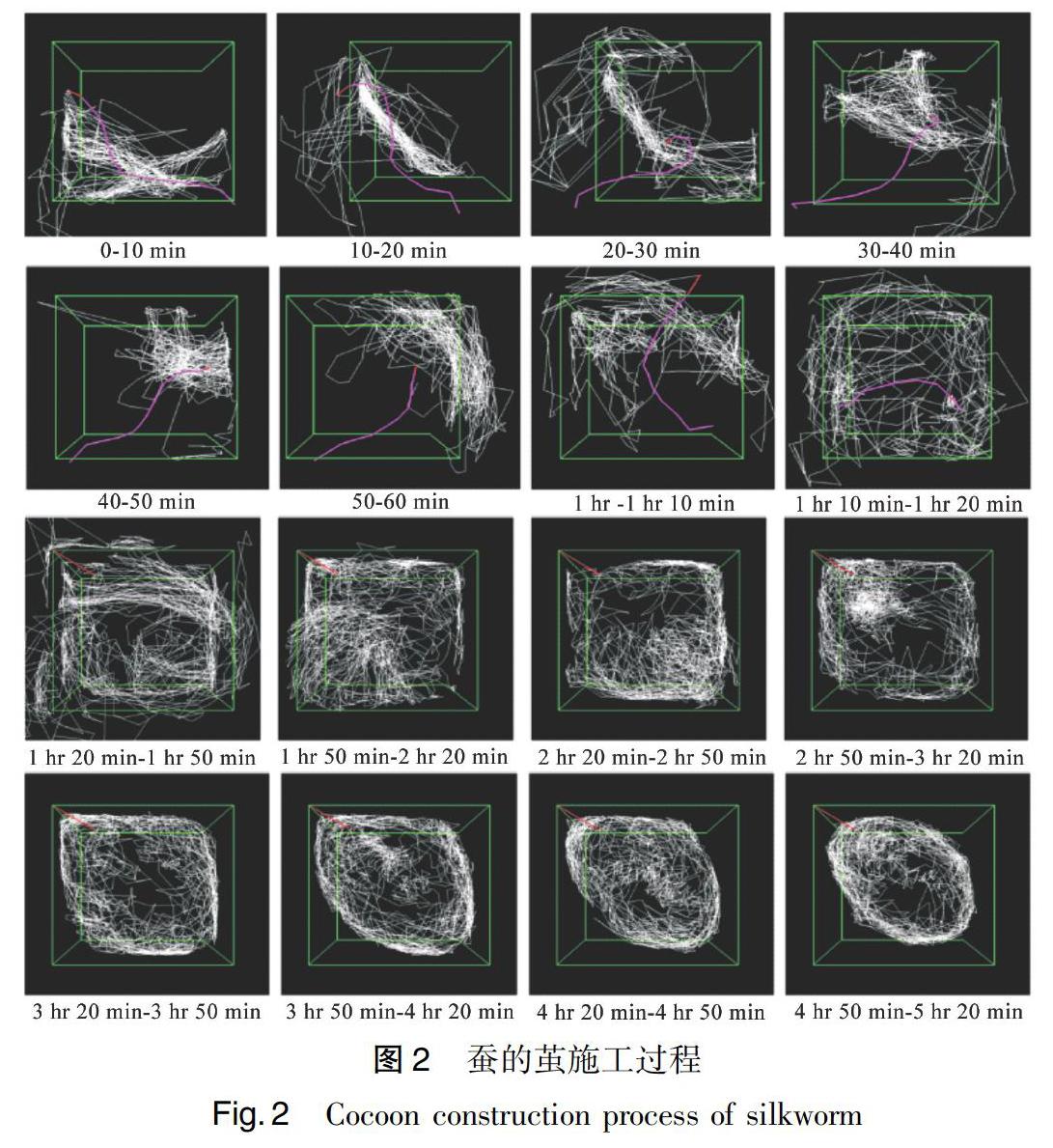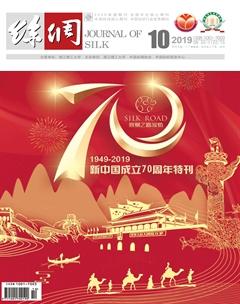丝绸和锦缎:从纺织工程和数学科学的角度来看人类历史中交织的文明与文化
森川英明



摘要: 孔子“温故知新”的教学对人们来说是极具启发性的内容。这句话的意思是“通过对旧事物的审查来研究过去,试图发现新事物(真理)”,由此能够从人类历史的各个方面审视、丝绸和锦缎。文章从纺织工程和数学科学的角度考虑这些对象,当考虑丝绸和锦缎时,就应该考虑到文化与文明的关系。“文化”和“文明”这两个词很难准确定义,但是文化是接近人类自然精神的方式,如哲学、宗教信仰和艺术;而文明是基于科学、技术和工业等的人类社会较高发展阶段表示出的状态。自然与人之间的交织构成了这个世界的文明和文化。换句话说,人类根据人类所拥有的价值观和文化推进了文明。尤为重要的是,锦缎是从史前时代到现在,作为文明和文化融合的代表性美学创作。
关键词: 丝绸;锦缎;文明;文化;历史
中图分类号: TS102.33 文献标志码: A 文章编号: 1001-7003(2019)10-0015-06 引用页码: 101103
Abstract: Confucius “温故知新” (gain new insights through reviewing old material) is highly instructive. This proverb means “an attempt to discover new things (truths) by studying the past through scrutiny of the old”. By this way, we can view silk and brocade from various aspects of human history. This study is from the perspective of textile engineering and mathematical science. The correlation between culture and civilization should be considered in the case of thinking silk and brocade. The words of “culture” and “civilization” are difficult to define precisely. However, we would like to define that culture is ways close to natural spirit of human beings such as philosophy, religious faith and art, and civilization is ways of advanced state for society based on material things of human beings such as science, technology and industry. The intertwining of nature with human being has constituted civilization and culture in this world. In other words, human being has advanced the civilization according to the values and culture which humankind had. And above all, brocade is the representative aesthetic creation fusing civilization and culture from prehistoric times until now.
Key words: silk; brocade; civilization; culture; history
1 蠶和茧
1 Silkworm and cocoon Silkworm is one creature in more than 1.4 million species of animals existed in this earth. Human being domesticated this insect and have availed it diligently to advance their life. The reason why silkworm build cocoon is necessity for protecting and making comfort of their pupal stage as a shelter, essentially. In this reason, cocoon has various functions such as biocompatibility, high-strength structure, anti-microbial and anti-bacteria properties, ultraviolet-shielding, heat retaining property, moisture absorbency, desorption moisture, breathability, gas absorbency and so on. It is able to call a smart architecture made by highly technical material and methodology (Fig.1).
In advance, silkworm produces and stores two kinds of proteins in silk gland of the body during larvae stage. After finishing its fifth instar stage, silkworm spin the liquid crystal proteins from small spinneret by drawing type spinning to fabricate fine filament. The process produces single fine filament which has about 10μm diameter and approximately 1000-1800m length, while orientation and crystallization of the polymeric silk protein[1-2]. Forming of a plane structure by single fine long filament is not easy for silkworm like a weaving or knitting fabric by human.
Silkworm forms the plane structured cocoon layer by using ‘8 and/or ‘S type geometric pattern which is created by swinging, expanding and contracting of thorax and head of the larval body cleverly. At the same time, silkworm construct a three-dimensional figure of an ellipse in a space (Fig.2). Silkworm has 3 eyes each in left and right side of the head. But these eyes can hardly see anything. When larval silkworm construct the cocoon, it recognize orientation in the space by the sense of touch firstly, and make scaffold by adhesive filament secondly. Finally, silkworm spin the filament upper part and under part of ellipsoidal space
repeated at fixed time intervals (Fig.3) [3-4]. Silkworm has not learned the method of cocoon construction by anybody, but accomplish the construction process only once in its life. These process and activities of silkworm made human keenly realize the force and mystery of nature.
2 茧丝和生丝
2 Cocoon filament and raw silk Humankind perceived values of cocoon filament created by the nature. Moreover human created technologies for making silk such as sericulture, cocoon cooking, raw silk reeling, degumming, dyeing and fabric weaving. Silk reeling is very simple process. The process fundamentally comprises four steps: drawing an end of cocoon filament from cooked cocoon, bundling cocoon filaments, cohering and dewatering of the filaments, and winding as a raw silk thread finally (Fig.4, Fig.5)[5]. But if we want to produce a high qualitative raw silk, we must apply many technologies and academic knowledges to optimize the process. For example, silk reeling process needs new cocoon filament according to lifespan of each filament length (Fig.6)[6-8]. When one filament in the process came to the terminal as a dropping end point, worker or machine try to supply new cocoon filament as a feeding end point. This phenomenon can consider to be a typical renewal stochastic process (Fig.7, Fig.8)[9-12]. Some researchers tried to analyze this problem and applied the solution to improve the process and other related phenomenon such as reliability engineering, queue management and social systems at the same time.
3 真絲面料和织造技术
3 Silk fabric and weaving technology Furthermore, silk threads is made into fabrics. Weaving and knitting technologies also created by human being. It is the technologies to compose a two-dimensional structure from one-dimensional materials such as silk threads (Fig.9). Geometrical patterns which is made from interlacing with warp yarns and weft yarns has supplied some inspiration to humankind as mathematical models. In case of figured textile such as the brocade, we have to make a plan and to control the arrangements of both yarns in the plane fabric structure. This mathematical concept and its technique like as Jacquard loom representatively did considerable for creating information theory and invention of computing machines (Fig.10). As described above, silk reeling and weaving process has developed itself and influenced other technology and science in the same time.
Humankind has continued to convert and represent a concrete problem into abstract concept and to solve the problem by mathematical and engineered methods. And then the obtained solution have been applied to the concrete problem again. It might be an important human way which alternate between concrete phenomenon and abstract concept to evolve the civilization.
4 錦缎在日本
4 Brocade in Japan
On the other hand, brocade has been created by humankind from ancient times in China combined with technology and human aesthetic sense. The brocade has functioned symbol and meaning of faith, politics and wealth rather than value of use in civil life. It is an important culture created by humankind and its history. And the brocade is also inspired technological values and civilization as well as aesthetic values.
Technology of sericulture and silk production in Japan was introduced from China. But there are various opinions about the route of the introduction, but the most convincing one is as follows. The technologies of sericulture, silk reeling and weaving were transferred from the ancient Chinese state of the kingdom of Wu [呉] to North Kyushu [北九州] of Japan by Tsushima Current. After that, the technologies extended to the Japanese Islands through several paths, and many kinds of brocades was woven in Japan as well. *There are several ancient relics of the Chinese brocade and Japanese one in Shosoin Treasure Repository, the temple of Horyuji and Japanese National Museum (National Institute for Cultural Heritage, Japan) and so on. Fig.11 shows an ancient brocade which produced in China. And we can find similar motif in Japanese one shown in Fig.12[13].
5 丝绸在现代的优势
5 Superiorities of silk in modern era Silk was often called “the queen of the fibers”. Human being had been searching for a finer fiber and a longer fiber for a long time. And human being recognized that silk is the fiber which human wanted and looked for. However we have many kind of high-performance fibers and high-functional fibers at the present era. I wonder if these modern fibers surpass the silk. Indeed modern fibers surpassed the silk in each functions such as ultra-fine morphology like a nano/micro fiber, high-strength performance like a carbon fiber, heat retaining property like a hollow fiber, ultraviolet-shielding like ceramic kneaded fiber, anti-bacteria property like a metal ion kneaded fiber, etc. Nevertheless, I think that no other fiber contains all performances and all functions in one fiber like the silk. Especially relations with the beauty of brocade, the silk has unique and highly dignified gloss as optical characteristics not in other fiber materials. In that sense, I can say that the silk is “the queen of the fiber” even in modern era which has a highly developed science and technology.
6 結 语
6 Conclusion From ancient times, humankind has passed down the techniques from generation to generation, and improved the process with ideas and many efforts by examining the process in order to create finer technology. Many people has been involving this events: workers, craftsmen, engineers, scientists and managers and so on. It is one of the thing that is the human agency or that makes human behavior. The silk and the brocade might be able to call a typical gifts of human civilization and valuable culture.
参考文献:
References:[1]AKINORI Shimazaki, NOBUMASA Hojo. Structure of Silk Yarn[M]. Ueda: Shinshu University, 1980.
[2]Society for Silk Science. Science of Silk[M]. Tokyo: Asakura Shoten, 1994.
[3]MIKIHIKO Miura, HIDEAKI Morikama, AKITOSHI Sugiura. Statistical analysis of body movement and shape of bombyx mori in spinning behavior[J]. The Journal of Sericultural Science of Japan, 1995,64(3):237-245.
[4]MIKIHIKO Miura, HIDEAKI Morikama, TATSUYA Shimizu, et al. Analysis of the fixed derection of a silkworm body during cocoon construction[J]. The Journal of Sericultural Science of Japan, 2000,69(3):207-214.
[5]Japan Academy (Nihon Kagakushi Kankoukai). Meijizen Nihon Sangyo Gijutsushi[Z]. 1960:272.
[6]AKINORI Shimazaki, MIKIHIKO Miura, TAKAHIKO Nishioka, et al. Probability distribution of homogeneous length in a fixed size raw silk thread[J].The Journal of Sericultural Science of Japan, 1986,55(1):41-45.
[7]XU Chunjiang, MIKIHIKO Miura, YUICHIRO Kikuchi, et al. Estimation of the reliable life for non-broken filament length of cocoon by a finite mixture model[J]. The Journal of Silk Science and Technology of Japan, 1992(1):22-28.
[8]BAI Lun, AKINORI Shimazaki. Control of raw silk size based on distribution of the return-size in fixed size reeling process[J].The Journal of Sericultural Science of Japan, 1994,63(1):39-44.
[9]HIDEAKI Morikawa, AKINORI Shimazaki. Character of size time series of hybrid silk[J]. The Journal of Sericultural Science of Japan, 1995,64(3):254-261.
[10]HIDEAKI Morikawa, MIKIHIKO Miura, MASAYUKI Iwasa. Influence of cocoon filament size on the time series of raw silk size[J]. The Journal of Silk Science and Technology of Japan, 1997(6):22-28.
[11]BAI Lun, HIDEAKI Morikawa. Estimation of the distribution of the staying number of cooked cocoons in the raw silk reeling machine[J]. Journal of Insect Biotechnology and Sericology, 2003,72(3):185-190.
[12]FEI Wanchun, BAI Lun. Ladder auto-regression model and simulation of size curves of cocoon filament[J]. The Journal of Silk Science and Technology of Japan, 2004(13):103-110.
[13]KANEO Matsumoto. Japanese Dyeing and Weaving (V1): Dyeing and Weaving in Ancient Times[M]. Tokyo: Chuokoron-sha, 1982.

